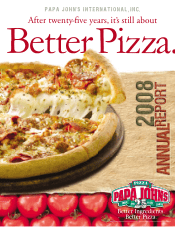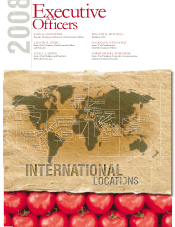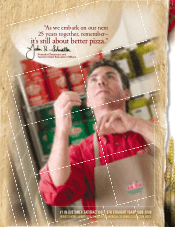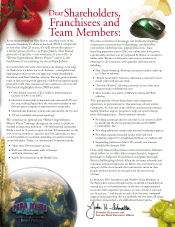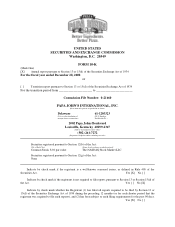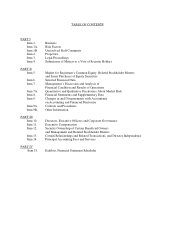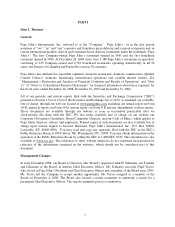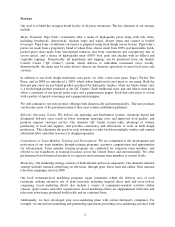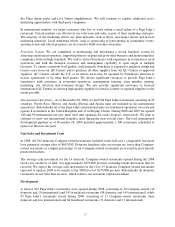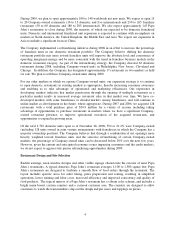Papa Johns 2008 Annual Report Download - page 10
Download and view the complete annual report
Please find page 10 of the 2008 Papa Johns annual report below. You can navigate through the pages in the report by either clicking on the pages listed below, or by using the keyword search tool below to find specific information within the annual report.3
Six Flags theme parks and Live Nation amphitheaters. We will continue to explore additional cross-
marketing opportunities with third-party companies.
In international markets, we target customers who live or work within a small radius of a Papa John’s
restaurant. Certain markets can effectively use television and radio as part of their marketing strategies.
The majority of the marketing efforts use print materials such as flyers, newspaper inserts and in-store
marketing materials. Local marketing efforts, such as sponsoring or participating in community events,
sporting events and school programs, are also used to build customer awareness.
Franchise System. We are committed to maintaining and developing a strong franchise system by
attracting experienced operators, supporting them to expand and grow their business and monitoring their
compliance with our high standards. We seek to attract franchisees with experience in restaurant or retail
operations and with the financial resources and management capability to open single or multiple
locations. To ensure consistent food quality, each domestic franchisee is required to purchase dough and
tomato sauce from our QC Centers and to purchase all other supplies from our QC Centers or approved
suppliers. QC Centers outside the U.S. or in remote areas may be operated by franchisees pursuant to
license agreements or by other third parties. We devote significant resources to provide Papa John’s
franchisees with assistance in restaurant operations, management training, team member training,
marketing, site selection and restaurant design. We also provide significant assistance to licensed
international QC Centers in sourcing high-quality suppliers located in-country or regional suppliers to the
extent possible.
International Operations. As of December 28, 2008, we had 588 Papa John's restaurants operating in 29
countries, Puerto Rico, Hawaii, and Alaska (Hawaii and Alaska units are included in our international
operations). Substantially all of the Papa John's international units are franchised operations (we own and
operate 8 restaurants in the United Kingdom and 15 in Beijing, China). During 2008 and 2007 we opened
140 and 90 international net new units (new unit openings less unit closings), respectively. We plan to
continue to grow our international franchise units during the next several years. Our total international
development pipeline as of December 28, 2008 included approximately 1,200 restaurants scheduled to
open over the next ten years.
Unit Sales and Investment Costs
In 2008, the 566 domestic Company-owned restaurants included in the full year’s comparable restaurant
base generated average sales of $867,000. Domestic franchise sales on average are lower than Company-
owned restaurants as a higher percentage of our Company-owned restaurants are located in more heavily
penetrated markets.
The average cash investment for the 14 domestic Company-owned restaurants opened during the 2008
fiscal year, exclusive of land, was approximately $270,000 per unit, excluding tenant allowances that we
received. We expect the average cash investment for the 10 to 15 domestic Company-owned restaurants
expected to open in 2009 to be similar to the 2008 level of $270,000 per unit. Substantially all domestic
restaurants do not offer dine-in areas, which reduces our restaurant capital investment.
Development
A total of 267 Papa John’s restaurants were opened during 2008, consisting of 24 Company-owned (14
domestic and 10 international) and 243 franchised restaurants (98 domestic and 145 international), while
95 Papa John’s restaurants closed during 2008, consisting of 11 Company-owned restaurants (nine
domestic and two international) and 84 franchised restaurants (71 domestic and 13 international).

